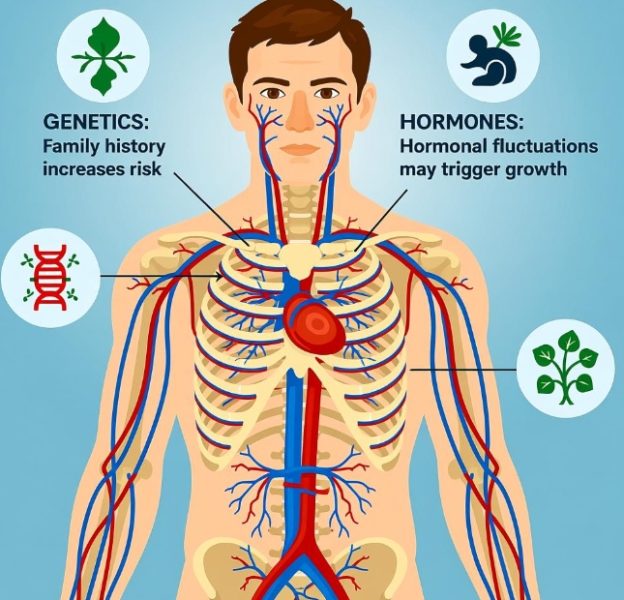Lymphatic diseases cover any disorder that impairs lymph-vessel drainage or nodal function. The most common manifestation is lymphedema—chronic swelling of body tissues—but other signs vary with cause (infection, tumours, trauma, malformation). Typical features include:
- Pitting or non-pitting swelling
Protein-rich fluid collects in the sub-cutis, producing enlargement of the limb, face, genitals or trunk; early swelling pits with pressure, later becomes hard and non-pitting . - Heaviness and tightness
Patients describe a constant “weight” or bursting sensation in the affected part, worse toward evening and relieved only by elevation or compression. - Reduced range of motion
Swelling around joints limits flexion and walking; long-standing disease leads to flexion contractures. - Recurrent skin infections
Stagnant lymph predisposes to cellulitis and lymphangitis—red, hot, painful plaques with fever that appear unpredictably and damage remaining lymphatics . - Skin changes
Progressively dry, thickened (hyperkeratotic) skin; cobble-stone papules, deep folds, and leak of milky lymph fluid (lymphorrhea) develop in advanced stages . - Cosmetic and psychological impact
Enlarged limbs or facial distortion cause embarrassment, anxiety and social withdrawal; prompt counselling is part of care . - Complication flags
Sudden increase in size, purple discoloration, severe pain, or open weeping suggest acute infection or, rarely, lymphangiosarcoma and require urgent assessment .
Early recognition, lifelong skin care, compression, exercise and weight control slow deterioration; any new swelling persisting >4 weeks merits specialist referral and imaging.
| Symptom | Usual Chronic Pattern | Urgent Complication |
|---|---|---|
| Swelling | Pits early, non-pitting late | Sudden enlargement, purple hue |
| Heaviness | Aching toward evening | Severe pain, fever |
| Skin | Dry, thick, papillomas | Red hot plaques → cellulitis |
| Movement | Mild limitation | Joint contracture |
| Psychosocial | Embarrassment, low mood | Rapid deterioration |
| Systemic | Usually absent | Sepsis, lymphangiosarcoma |



